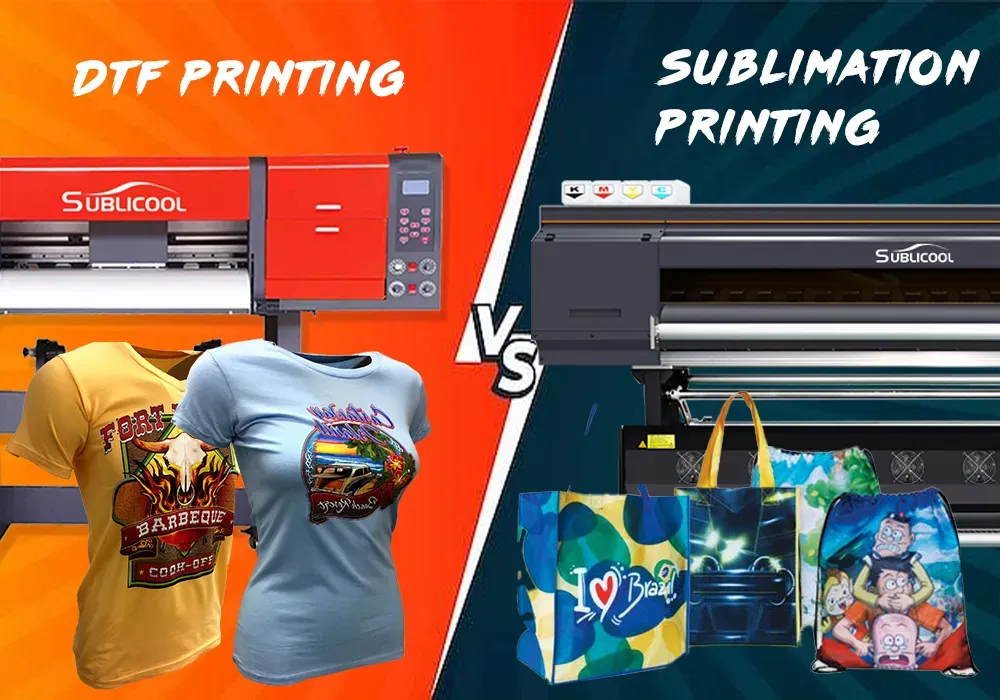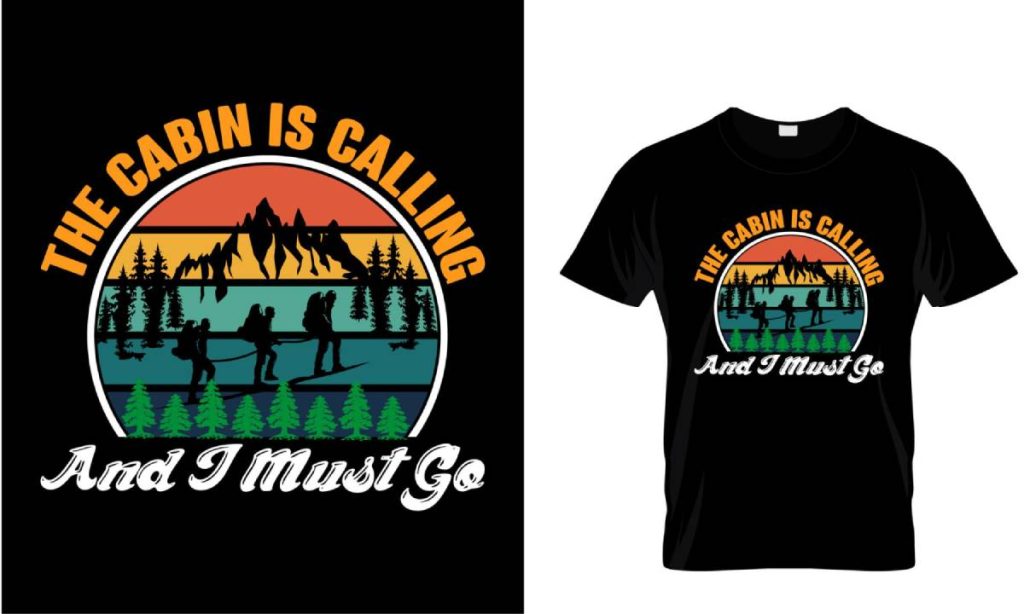When it comes to custom fabric printing, understanding the differences between DTF vs sublimation vs screen printing is essential for anyone looking to make a choice that suits their needs. Each of these printing methods offers unique advantages and characteristics that can significantly impact the final product’s quality and durability. DTF printing, also known as Direct-to-Film, has gained popularity for its vibrant color output and versatility across various materials. On the other hand, sublimation printing excels in creating lasting designs on polyester fabrics by embedding colors into the material. Finally, screen printing remains a traditional favorite for bulk orders, renowned for its efficiency and long-lasting prints. By exploring this printing methods comparison, you will gain valuable insights into which technique best aligns with your specific printing requirements.
In the realm of apparel decoration, there are several techniques available, notably known as fabric transfer methods, which include direct-to-film printing, dye sublimation, and stencil-based printing. These diverse approaches allow artisans and businesses to create customized designs tailored to their customers’ preferences. DTF printing stands out for its adaptability, enabling high-quality prints on various media beyond fabric. Meanwhile, dye sublimation is favored for its ability to produce vivid artwork that seamlessly integrates into synthetic materials. Lastly, stencil printing, commonly referred to as screen printing, remains a staple for high-volume production due to its cost-effectiveness and reliability. By delving into these methods, we can better appreciate their distinct processes and the roles they play in the custom printing landscape.
Understanding DTF Printing: Benefits and Applications
Direct-to-Film (DTF) printing represents a revolutionary edge in custom fabric printing, combining efficiency with vibrant output. One of the major benefits of DTF printing is its adaptability to different fabric types including cotton and polyester. This flexibility makes it a go-to choice for apparel businesses that aim to diversify their product offerings. Additionally, DTF’s eco-friendly process generates significantly less film waste compared to traditional print methods, making it an appealing option for environmentally conscious businesses.
In the context of applications, DTF printing is ideal for detailed graphics and designs with complex color schemes. This is especially beneficial for creating unique merchandise in various industries, from fashion to sportswear. With DTF, users can achieve a level of detail and color intensity that rivals more established methods while maintaining a user-friendly printing process. Furthermore, the recent growth of compact DTF printers has allowed small businesses to engage in high-quality printing without the need for extensive professional setups.
Sublimation Printing: Uniqueness and Limitations
Sublimation printing is distinctive for its process, which involves turning solid dye into gas without going through a liquid phase. This transformative technique allows the dye to bond seamlessly with polyester fabrics, resulting in designs that are lasting and vibrantly colored. The appeal of sublimation lies in its ability to create full-color, photographic-quality images that do not crack or fade over time, making it ideal for high-quality custom fabric printing.
However, the limitations of sublimation must also be understood. Primarily, it is restricted to polyester or specially coated materials, which narrows its applicability. For businesses focused on diverse fabric options, relying solely on sublimation may not be feasible. It is essential for users to weigh these factors when selecting a printing method to ensure that their choice aligns with their project requirements.
Screen Printing: Tradition Meets Efficiency
Despite the rise of modern printing technologies, screen printing remains a cornerstone in the custom apparel market due to its time-tested efficiency and quality output. This traditional method is particularly advantageous for bulk orders, allowing printers to minimize costs per unit significantly. The durability of screen-printed designs makes them ideal for products that are subjected to heavy wear and tear.
However, screen printing does come with its own set of challenges. The setup process can be labor-intensive, requiring different screens for each color in a design. This complexity makes it less suitable for small batches or customized projects that necessitate quick turnarounds. Nonetheless, for large volumes, screen printing provides unmatched quality and longevity, establishing itself as a reliable option.
Printing Methods Comparison: Choose Wisely
When considering printing methods, it’s crucial to analyze the core benefits and limitations of DTF, sublimation, and screen printing. For instance, DTF printing is ideal for providing versatility and a broad spectrum of fabric types, while sublimation excels in producing vibrant, permanent designs on polyester. On the other hand, traditional screen printing shines in terms of cost-effectiveness for large orders, making it a prudent choice for businesses looking to produce merchandise in bulk.
In the quest for the perfect printing method, understanding these comparative factors allows businesses and creatives alike to make informed decisions. Engaging with current market trends, such as sustainability and advancements in printing technology, further enhances one’s ability to choose the most efficient printing solution that aligns with their specific needs.
The Rise of Sustainable Printing Practices
Sustainability has become a focal point in the printing industry as businesses seek to reduce their environmental impact. Techniques such as DTF printing, which produce less waste than traditional methods, are gaining traction among eco-aware brands. This shift towards sustainable practices not only meets consumer demand for environmentally responsible products but also supports ongoing initiatives within the printing community to foster greener operations.
Moreover, many companies are now integrating sustainable materials and inks into their printing processes. By prioritizing eco-friendly options, businesses can appeal to a growing demographic of consumers who value sustainability in their purchasing decisions. This trend illustrates not just a change in consumer preferences but also a broader commitment within the industry to embrace and promote sustainable practices.
Exploring Innovations in Fabric Printing Technologies
Innovation within the fabric printing industry is evolving at an unprecedented pace, with manufacturers introducing compact and versatile printing solutions. New advancements in DTF printing technology, for instance, allow small businesses to operate at competitive levels with larger firms. These innovations streamline the printing process and make it accessible to new entrepreneurs and craft enthusiasts.
Additionally, the rise of digital printing technologies opens opportunities for customization, enabling users to create unique designs with minimal setup. As these advancements continue to unfold, the landscape of custom apparel printing is set to transform, allowing for greater creativity and efficiency in the design and production process. Keeping abreast of these developments will be essential for anyone involved in custom fabric printing.
Frequently Asked Questions
What are the main differences in DTF vs Sublimation vs Screen Printing?
DTF (Direct-to-Film), sublimation, and screen printing differ primarily in their processes and material compatibility. DTF printing utilizes a special transfer film and can print on various fabrics, ideal for detailed designs. Sublimation printing bonds dye to polyester or polymer-coated materials, offering vibrant colors but limited to these fabrics. Screen printing is a traditional method best for bulk orders, producing durable prints but less versatile in designs.
Is DTF printing better than sublimation or screen printing?
Whether DTF printing is better than sublimation or screen printing depends on your specific needs. DTF is versatile and eco-friendly, ideal for various fabrics. Sublimation offers exceptional durability and vibrant colors for polyester, making it great for long-lasting prints. Screen printing is best suited for high-volume orders due to its cost-effectiveness for larger runs. Each method shines in different areas.
Can you use DTF printing on any fabric like screen printing and sublimation?
Yes, DTF printing can be used on a wide range of fabrics, including cotton, polyester, and blends, unlike sublimation, which is limited to polyester and coated materials. This versatility makes DTF a more adaptable option compared to both sublimation and screen printing.
What are the cost considerations when comparing DTF, sublimation, and screen printing?
Cost considerations differ between DTF, sublimation, and screen printing. DTF printing has a low initial setup cost and is cost-effective for small to medium orders. Sublimation generally requires investment in specialized equipment but has minimal per-print costs for larger runs. Screen printing can be cost-efficient for bulk orders but incurs higher setup costs for small quantities.
Which printing method is more environmentally friendly: DTF, sublimation, or screen printing?
DTF printing is often considered the most environmentally friendly option among DTF, sublimation, and screen printing. It produces less waste and can use eco-friendly inks. Sublimation is also more sustainable due to its dye method, while screen printing may produce more waste and use more materials overall.
What kind of designs work best with DTF printing compared to sublimation and screen printing?
DTF printing is ideal for intricate, high-detail designs and gradients due to its advanced transfer process. Sublimation works best for vibrant, full-color images on polyester fabrics, while screen printing excels at bold, solid-color designs, especially on bulk orders. Each method has unique strengths depending on the design requirements.
| Feature | DTF Printing | Sublimation Printing | Screen Printing |
|---|---|---|---|
| Process | Transfers designs from a film onto fabric using heat | Dye penetrates fabric upon heating and becomes part of it | Uses a mesh screen to stencil ink onto the fabric |
| Advantages | Eco-friendly with vibrant colors and detailed designs | Durable, won’t fade or peel; ideal for polyester | Excellent for bulk orders with high-quality prints |
| Limitations | Requires special film; can be less effective on some fabrics | Limited to polyester and polymer-coated items | Time-consuming setup; expensive for small runs |
Summary
DTF vs Sublimation vs Screen Printing are three powerhouse printing methods that cater to different needs in the custom apparel market. DTF printing is highly versatile, allowing for intricate designs on a wide range of fabrics, including cotton and polyester. Sublimation offers unparalleled durability and vibrant colors, but it is best suited for polyester materials only. Meanwhile, screen printing remains a steadfast choice for large-scale orders, delivering high-quality results at reduced costs per unit. As sustainability and technology shape the industry, the choice among these methods hinges on specific project requirements and desired outcomes, making it essential for businesses and enthusiasts to understand their strengths and limitations.



